William Thornton and Charlotte Crosby Kemper Memorial Fountain; Rothschild's Clothing Store
Introduction
Author-Uploaded Audio
Jonathan Kemper, grandson of William Thornton and Charlotte Crosby Kemper, shares the history and design of this downtown Kansas City fountain
Text-to-speech Audio
Artists Lori Doolittle and Alvin Holm designed this unique downtown Kansas City fountain to resemble the ancient stone bowl displayed at the Nelson-Atkins Museum of Art. The fountain was dedicated in 1999 to honor the Kemper Family and their commitment to Kansas City. The artists added features that preserve energy as part of their effort to reflect themes of conservation, art, and technology into the design of the fountain. The artists also worked to blend aspects of the fountain to match the architecture of nearby buildings, including the Commerce Bank headquarters. The fountain is located on the southwest corner of 10th and Main, once home to Rothschild’s. One of Kansas City’s premier clothing stores for over 75 years, Rothschild’s built its reputation on affordable prices and customer service. It was also known for its unique bargain basement with slightly damaged or closeout goods at steep discounts. The company's flagship downtown store was located here and the company operated several other Kansas City area locations as well as stores in Oklahoma. Similar to other downtown merchants, Rothschild’s saw declining sales as the population shifted to the suburbs and shopping malls. Rothschild’s was forced to close its Kansas City stores, including the downtown location, in 1978. The building was torn down in 1982 and replaced by a parking lot. In 1999, that parking lot was converted to a small park with the Kemper Fountain.
Images
Rothschild's circa 1930.
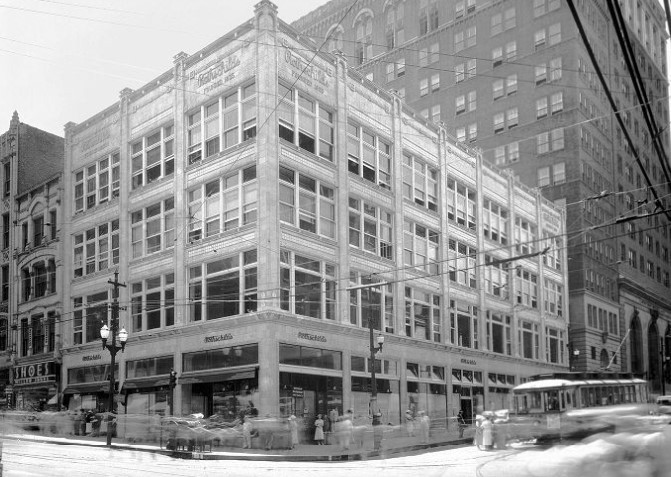
1909 KC Journal advertisement for Rothschild's
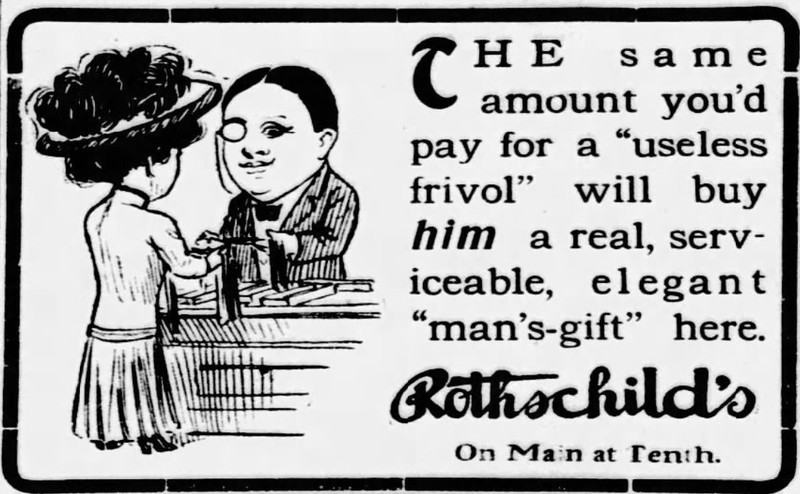
Kansas City Journal article about the 1909 Rothschild's fire
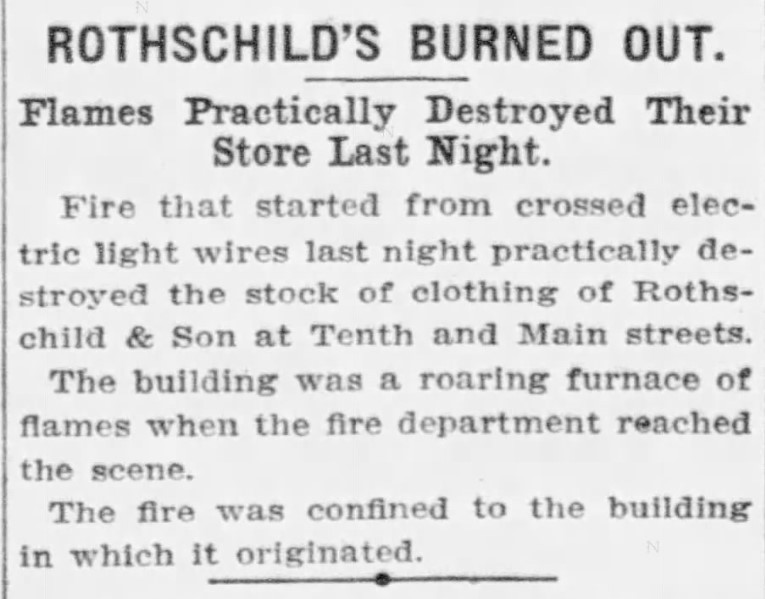
Kansas City Star Sketch of firemen fighting the fire at Rothschild's
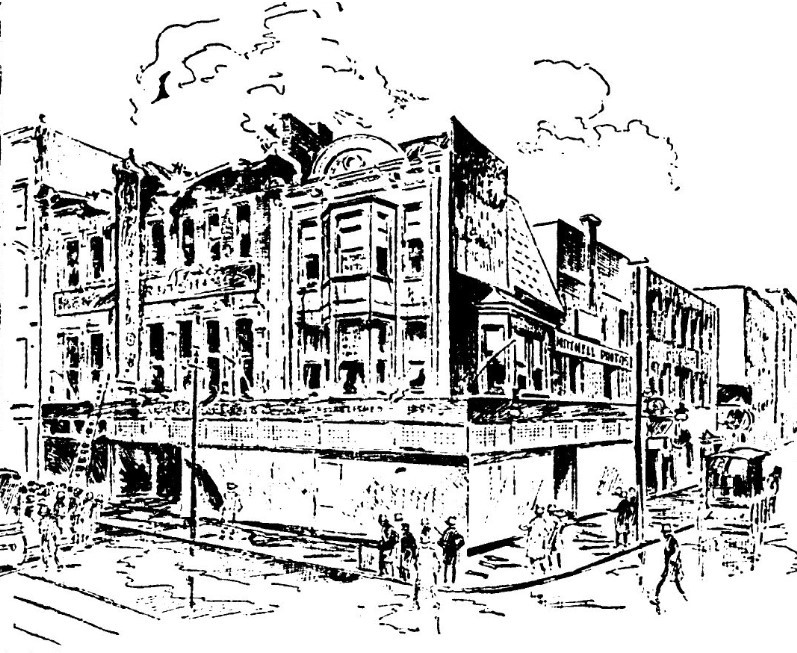
A WWI Victory Parade marches past Rothchild's in 1919
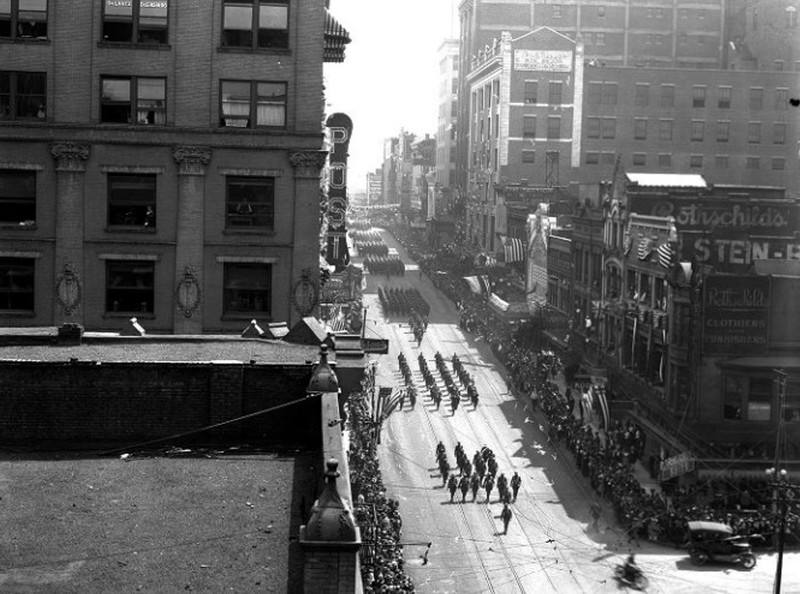
Rothschild's after the 1947 expansion
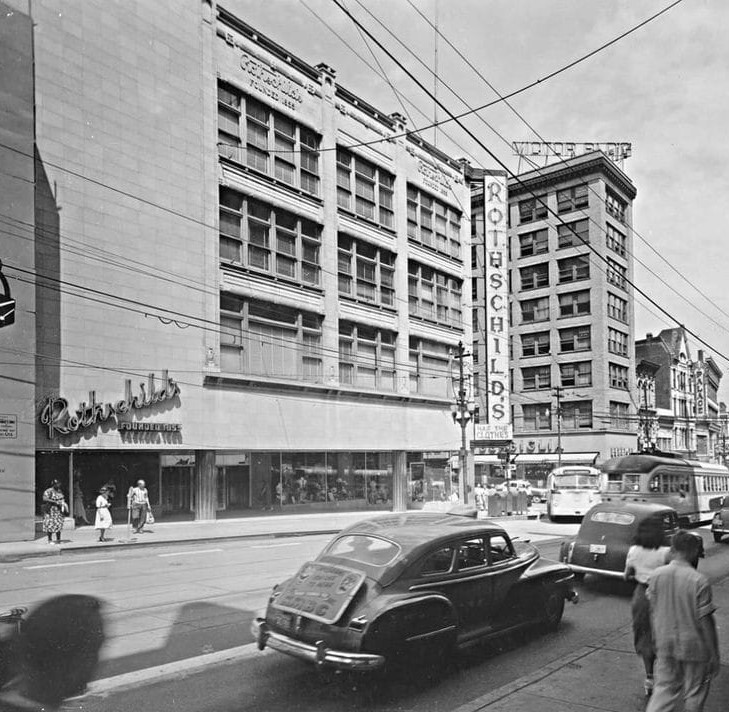
This fountain was dedicated in 1999 in recognition of the contributions of the Kemper Family to Kansas City.
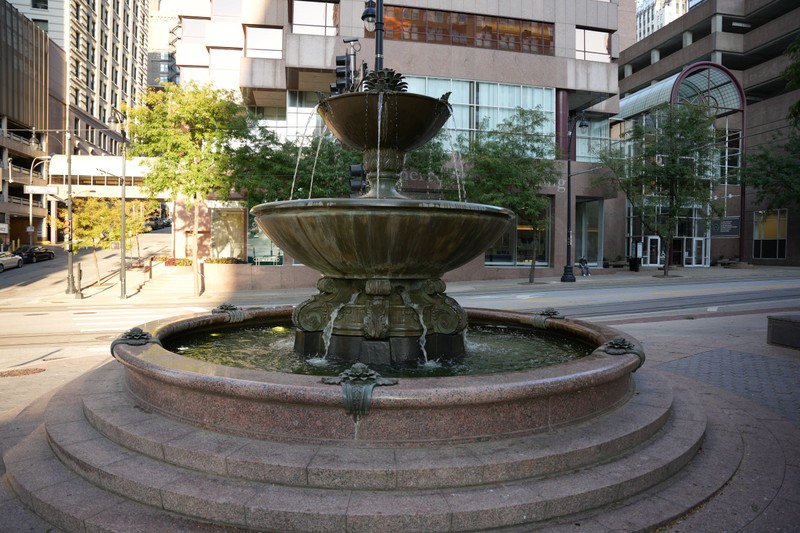
This fountain was dedicated in 1999 in recognition of the contributions of the Kemper Family to Kansas City.
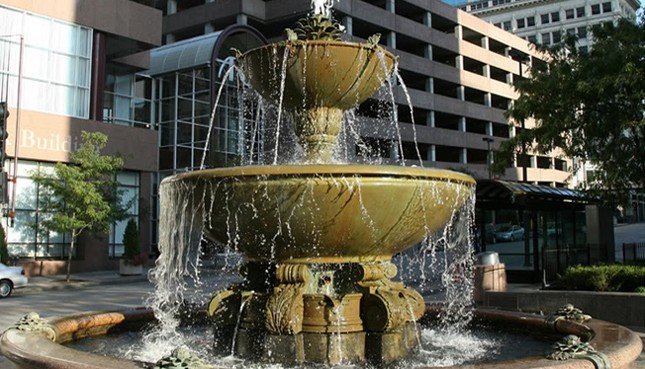
William Thornton and Charlotte Crosby Kemper Memorial Fountain
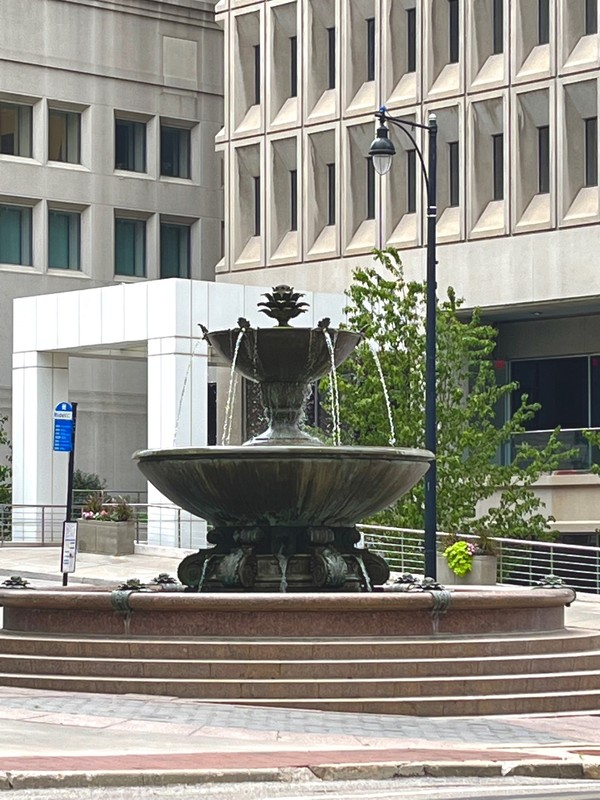
This dedication plaque is located near the fountain
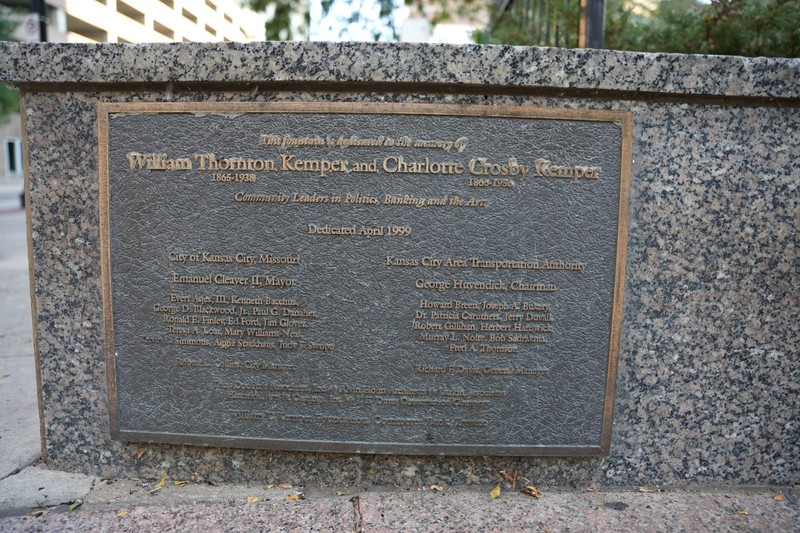
The fountain is located next to the Kansas City headquarters of Commerce Bank which was established by William Thornton Kemper Sr.
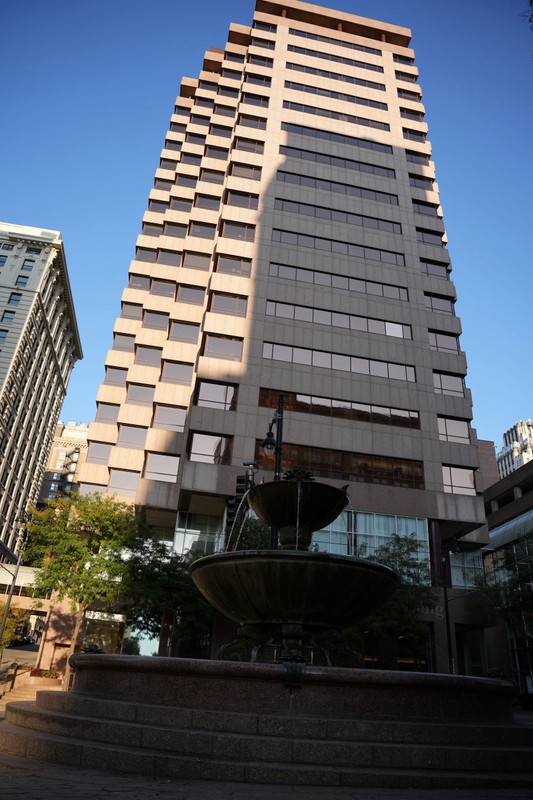
Backstory and Context
Text-to-speech Audio
Kemper Fountain
The small urban park replaced a parking lot that followed the demolition of the former Rothchild's store. The park and includes a centerpiece fountain dedicated in 1999 to honor William T. Kemper (1865-1938) and Charlotte Crosby Kemper (1866-1956). The fountain's location between Commerce Bank, a leading business established by the Kemper family, and the Kansas City Public Library, an institution led and supported by multiple generations of Kemper family members, was selected to reflect the family's commitment to both commercial and civic improvement in Kansas City. In 1999, the city converted the parking lot into a small city park to host the William and Crosby Kemper Memorial Fountain to honor their commitment to Kansas City. Artists Lori Doolittle and Alvin Holm designed this unique downtown Kansas City fountain to resemble the ancient stone bowl which is on display at the Nelson-Atkins Museum of Art. The fountain's location between Commerce Bank, a leading business established by the Kemper family, and the Kansas City Public Library, an institution led and supported by multiple generations of Kemper family members, was selected to reflect the family's commitment to both commercial and civic improvement in Kansas City.
Rothschild's
Born in Germany in 1831, Philip Rothschild immigrated to the United States as a teenager and settled in Cincinnati, Ohio. When he was 22, he took a steamboat to the newly incorporated Town of Kansas. Here he established a clothing outfitter for the Santa Fe Trail traffic. Within six months, he had set up a second location in Westport. However, in 1855, after the Kansas Territory had opened to settlement, he decided to relocate his business to Leavenworth, Kansas, where he opened up a military outfitter named Rothschild’s.
Rothschild prospered in Leavenworth and raised his family, including sons Louis and Alfred, who grew up working in the business. 'The Rothschild’s store counted amongst its customers such men as Generals Sheridan and Sherman. However, by the turn of the 20th century, Leavenworth was no longer the important military hub it once was and was dwarfed by Kansas City, which had shaken off its origins as a frontier town to become a major metropolitan city. Therefore, Rothschild and his sons decided to move the business back to Kansas City, setting up a men’s and women’s clothing store in a 4-story building here at the southwest corner of 10th and Main St. in Downtown Kansas City’s burgeoning shopping district. The store was just one block north of the city’s famous Petticoat Lane, a nickname for 11th Street and the major department stores clustered around it.
Rothschild’s offered a mix of clothing that needed to be fit and tailored, as well as the new trend of ready-to-wear clothing. It also offered a full line of accessories such as hats, gloves, scarves, and belts. The company developed a good reputation for offering quality products at reasonable prices with customer service. Its bargain basement, where shoppers could purchase closeouts, returns, and damaged merchandise at steep discounts, became legendary in Kansas City.
Tragedy struck on the morning of Feb. 2nd, 1909, when an electric fire completely engulfed the Rothchild’s store. The store had just received in a $30,000 shipment of spring fashions, and it was a total loss. Undeterred, Louis and Alfred, who had taken over the business from their father by this point, leased the building across the street and opened a temporary location with what stock they had. 1909 ended up being the biggest year Rothschild’s had ever had. Within a year, they had completely renovated and moved back to their original location. As their business grew, the brothers purchased the building next door and added several floors. The new Rothschild’s, opened in 1923, had double the space. Another major expansion took place in 1947. In 1935, they opened their first branch store for women’s clothing at the Country Club Plaza. When that was successful, they also opened up a men’s clothing location at the Plaza. More Kansas City locations and stores in Oklahoma would follow.
However, in the 1960s and 1970s, Rothschild’s began to feel the impact of the changing shopping habits of people in Kansas City’s suburbs, who now preferred the convenience of local shopping malls to Downtown Kansas City’s shopping district. As the downtown department stores closed one by one, Rothschild’s was able to survive until it was forced to close all Kansas City operations in 1978. The Oklahoma stores were eventually converted to Dillard’s Stores. The flagship building at 10th and Main St. sat empty for a few years before it was demolished and replaced by a parking lot in 1982.
Sources
William T. and Charlotte Crosby Kemper Memorial Fountain, Kansas City Parks and Recreation Website. Accessed June 21st 2022. https://kcparks.org/places/kemper-william-t-and-charlotte-crosby-memorial-fountain-2/.
William Thornton and Charlotte Crosby Kemper Memorial Fountain, Kansas City Public Library, Digital History. Accessed June 21st 2022. https://kchistory.org/image/william-thornton-and-charlotte-crosby-kemper-memorial-fountain.
"At 10th and Main, What?." Kansas City Star (Kansas City, Mo.) February 2nd, 1909. .7.
Stafford, Diane. "Rothschild's to Close Area Stores." Kansas City Star (Kansas City, Mo.) June 19th, 1978. .8.
Lambe, Joe. "City Leaders Seek New Path for Saving Historic Buildings." Kansas City Star (Kansas City, Mo.) June 9th, 1985. .
"Exceptions this year." Kansas City Post (Kansas City, Mo.) August 27th, 1909. .14.
Photographs (General collection), Kansas City Public Library, Missouri Valley Collection website, accessed 2/3/2025, https://kchistory.org/image/rothschilds-department-store-building
Kansas City Journal (Kansas City, Mo.) December 12, 1909, p. 3
Fire at Rothschild's, Kansas City Journal (Kansas City, Mo.) February 2, 1909. p. 7
"At 10th and Main, What?." Kansas City Star (Kansas City, Mo.) February 2nd, 1909. .7.
General Collection, Kansas City Public Library, Missouri Valley Collection website, accessed 4/2/2025, https://kchistory.org/image/world-war-i-parade-4?solr_nav%5Bid%5D=cfee6da363790cb64360&solr_nav%5Bpage%5D=0&solr_nav%5Boffset%5D=7
John Fulmer, Kansas City Memories...Vintage Photos, Places, and Things Remembered Facebook Page, 10/20/2023, accessed 3/2/2025, https://www.facebook.com/groups/307128079330824/search/?q=rothschild%27s
Photo by David Trowbridge
https://kcparks.org/places/kemper-william-t-and-charlotte-crosby-memorial-fountain-2/
Robin Trafton
Photo by David Trowbridge
Photo by David Trowbridge
